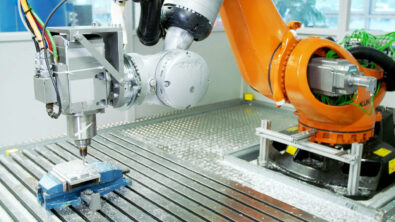Talking Aerospace Today – The Need for a Digitalized A&D Industry – Summary

The Talking Aerospace Today podcast has returned with a new series of episodes about digital transformation in the aerospace and defense (A&D) industry, with Todd Tuthill, Vice President of A&D for Siemens Digital Industries Software, in the pilot’s seat. In the first episode, Todd begins by describing the current state of the industry, which is experiencing incredible innovation and growth not seen in a long time. However, this newfound prosperity is at risk from a worsening shortage of aerospace engineers, a problem that can be alleviated by companies maturing their digital transformations.
The state of the industry
To understand just how much growth the A&D industry is undergoing, Todd says he has never seen such high spending in the past thirty years. Normally, the commercial and defense sectors experience inverse rates of spending when compared to each other. When commercial spending is up, defense spending goes down, and vice versa. Now, however, both commercial and defense aerospace are receiving skyrocketing investments simultaneously. A trend that is expected to continue for the next five years. Combine this with continuing innovation in sustainable aviation and space exploration, A&D as a whole is looking forward to a bright and prosperous future.
However, a major hurdle on the path to that future is the globe-spanning aerospace engineer shortage, which has been looming over the industry for years and is expectedto worsen, especially as demand increases. The industry today is lacking tens of thousands of engineers, numbers brought about by the increasing number of older engineers retiring and employment shifts caused by the COVID-19 pandemic. This trend is not unique to A&D either, with a prediction that by the year 2030, 20 percent of all engineering positions worldwide will remain unfilled. To fully capitalize on the aerospace industry’s expected growth in the coming years, overcoming this shortage must be top priority.
Why digital transformation
Improving aerospace education and outreach is certainly a worthy goal, but Todd explains much of the problem stems from inefficient data management. As Todd found throughout his career, most engineers—including those with advanced educations—do not spend the majority of their time performing any actual engineering, but instead spend their time searching for and processing data. Much of this mundane labor stems from the rising product complexity, which often involves integrating several complex systems from different engineering domains that have long been disconnected due to slow, document-based development processes. Tackling these data gaps would let engineers return to innovating like they were trained to, and digital transformation offers ways to do that and more.
Digital transformation provides multiple capabilities to connect data and multiply the impact of engineers. For example, the digital twin acts as a virtual representation of a physical product and can act as a single source of truth that engineers across domains could access to see how changes to their systems interact with the rest of the product. Similarly, digital threads can increase data traceability across product lifecycles, dramatically reducing the time an engineer takes to process data. However, these connective strategies are only the beginning. To get the full return on investment from digital transformation, companies would need to find ways to make data do the work for them and further shift mundane responsibilities away from engineers. This would let engineers dedicate themselves even more toward actual engineering and increase the impact they have on the advancement of the A&D industry.
Forecasting clear skies
The good news is many companies are already on their way toward furthering their digital transformations. According to a recent research report by CIMdata, many A&D companies are increasing their investments into digital threads with the goal of connecting disparate engineering domains and increasing the traceability of data across their product lifecycles. This is a great sign that A&D companies recognize the value of digital transformation and are marking efforts to improve their workforce and make these connections between their processes and engineering domains.
The amazing levels of growth and innovation in the A&D industry right now is exciting, but if companies are not careful, they may find themselves too overwhelmed by a lack of engineers to fully capitalize from them. Digital transformation provides solutions to get around this critical issue, but to truly unleash digital transformation’s full potential, the industry must go beyond the levels of transformation indicated by the CIMdata report. Fortunately, the initial steps taken by these companies show a willingness to mature their digital transformations and potentially go beyond toward new heights. Stay tuned for future episodes where Todd will define the steps to be taken toward digital transformation maturity and the benefits that they will bring.
Be sure to listen to this full episode or read the transcript.
Siemens Digital Industries Software helps organizations of all sizes digitally transform using software, hardware and services from the Siemens Xcelerator business platform. Siemens’ software and the comprehensive digital twin enable companies to optimize their design, engineering and manufacturing processes to turn today’s ideas into the sustainable products of the future. From chips to entire systems, from product to process, across all industries. Siemens Digital Industries Software – Accelerating transformation.


